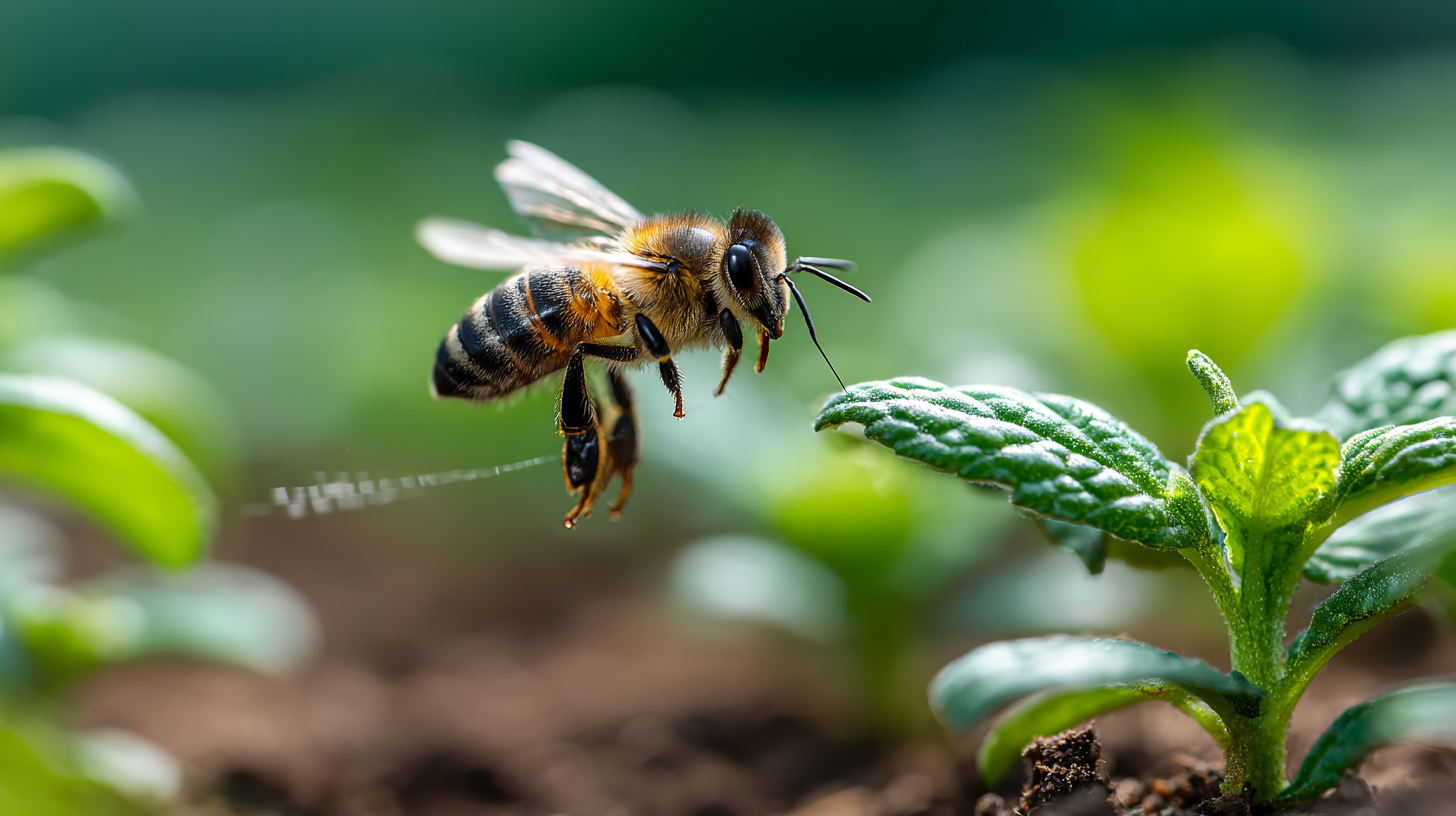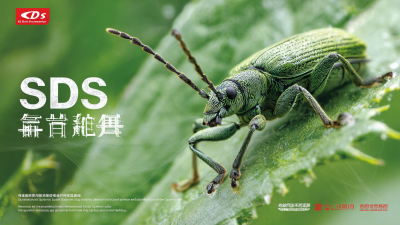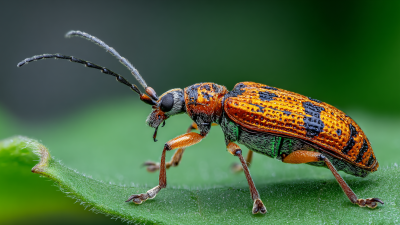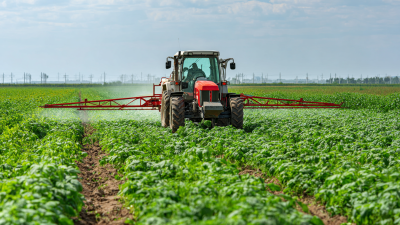 0551-68500918
0551-68500918 





The effective management of pests is critical in agriculture, where it is reported that pests can cause crops losses of up to 50% in extreme cases (FAO, 2020). As the agricultural sector faces increasing challenges from pest resistance and environmental regulations, effective utilization of Insecticide Sds (Safety Data Sheets) has emerged as an essential practice for ensuring safe and responsible pest management.

Innovation Meiland (Hefei) Co., LTD., dedicated to the research and development of new pesticide products, formulations, and processes, plays a pivotal role in promoting comprehensive understanding and adherence to these guidelines. By leveraging Insecticide SDS, farmers and pest control professionals can make informed choices that not only protect their crops but also safeguard human health and the environment. Effective training and implementation of the practices outlined in Insecticide SDS are crucial for maximizing the benefits of these products while minimizing potential risks, ensuring that agricultural practices are both productive and sustainable.
Understanding Insecticide SDS: Key Components and Importance Safety Data Sheets (SDS) for insecticides are vital documents that provide essential information about the chemicals used in pest management. These sheets detail the properties, handling precautions, toxicity, and first aid measures associated with each product. Understanding the key components of an SDS allows users to minimize risks associated with insecticide application and ensures compliance with safety regulations. The most important sections to focus on include chemical identification, hazards identification, and exposure controls.
Safety Data Sheets (SDS) for insecticides are vital documents that provide essential information about the chemicals used in pest management. These sheets detail the properties, handling precautions, toxicity, and first aid measures associated with each product. Understanding the key components of an SDS allows users to minimize risks associated with insecticide application and ensures compliance with safety regulations. The most important sections to focus on include chemical identification, hazards identification, and exposure controls.
Tips for effectively utilizing Insecticide SDS include familiarizing yourself with the specific terms used in the document. Pay particular attention to the hazard symbols and precautionary statements, as these indicate the level of risk and necessary safety measures. Additionally, ensure you have a clear understanding of recommended personal protective equipment (PPE) to prevent exposure during application. Always consult the SDS before handling a new product, as each insecticide may have unique requirements and safety guidelines.
Another critical aspect is to review the emergency response information provided in the SDS. This section outlines the necessary steps to take in case of accidental exposure or spills, which can be crucial in minimizing harm. Keeping a physical or digital copy of SDS accessible at your workplace can streamline decision-making during pest management operations, ensuring that safety remains a top priority.
When it comes to handling insecticides, understanding hazard symbols and labels is crucial for ensuring safety. Insecticide labels contain important information about the toxicity levels and handling precautions, which can often be misunderstood by consumers. Familiarizing yourself with these labels can significantly reduce the risks associated with pesticide exposure. The Global Harmonization System (GHS) provides standardized symbols that indicate the nature of the hazards. Learning to interpret these symbols allows users to make informed decisions and implement safer pest management practices.
Tips: Always read the label thoroughly before using any insecticide. Pay attention to hazard symbols such as skulls for toxicity or exclamation marks for general hazards. Use personal protective equipment (PPE) as advised on the label to minimize exposure. Also, store insecticides out of reach of children and pets, ensuring they are secured in a labeled container.
By improving the understanding of these labels, consumers can avoid common misperceptions about pesticide toxicity and enhance their safety during pest management activities. Remember that proper interpretation of labels is key to not only protecting yourself but also benefiting the environment.
Effectively using insecticide Safety Data Sheets (SDS) is crucial for ensuring safe pest management, particularly in environments and populations vulnerable to chemical exposure. Assessing risks associated with pest control methods involves understanding the surrounding environments, socioeconomic factors, and specific vulnerabilities of different communities. With climate change exacerbating environmental health risks, it’s vital to identify populations that are more susceptible to these changes, such as those living in flood-prone areas or those with limited access to health resources.
Tips: Always start by reviewing the SDS for the specific insecticide to familiarize yourself with the hazards it presents and the recommended safety measures. Additionally, consider conducting a vulnerability assessment that involves mapping out communities at risk. This may include examining health disparities, socioeconomic status, and environmental conditions that could increase susceptibility to pest-related health issues.
Also, utilize GIS-based tools to analyze geographical data regarding pest incidence and community vulnerabilities. This data-driven approach allows for better-informed decisions in pest management strategies, ultimately leading to more effective and safer use of insecticides, safeguarding public health amidst evolving environmental challenges.
When it comes to safely managing pests, proper storage and disposal of insecticides are crucial elements that should not be overlooked. Storing insecticides in a cool, dry place away from direct sunlight and out of reach of children and pets ensures their effectiveness and minimizes the risk of accidental exposure. It is also important to keep these substances in their original containers, as they are labeled with essential information regarding their use and hazards. Organizing your storage area to separate insecticides from other household chemicals can further reduce the chance of cross-contamination.

Disposing of insecticides properly is just as vital to safe pest management. Never pour unused insecticides down the drain or throw them in the trash, as these actions can harm the environment and local water sources. Instead, contact your local waste management facility for guidance on hazardous waste disposal programs. Many communities offer designated collection days or drop-off locations for safe disposal of toxic substances. By adhering to these best practices for storing and disposing of insecticides, you can protect both your household and the environment while effectively managing pest concerns.
Integrated Pest Management (IPM) is a holistic approach that combines various pest control strategies to minimize the use of chemical insecticides while maximizing effectiveness. When implementing IPM, it’s crucial to consider the guidelines provided in the Safety Data Sheets (SDS) of insecticides. These documents not only provide essential safety information regarding handling and application of chemicals but also emphasize the importance of selecting insecticides that are compatible with IPM principles, such as reducing environmental impact and promoting non-Chemical Pest control measures.
In practice, integrating SDS guidelines into an IPM program involves evaluating the pest life cycle and identifying non-Pesticide Control methods, such as biological control or habitat management. When an insecticide is deemed necessary, consulting the SDS ensures that the choice aligns with IPM goals, thus leveraging the strengths of various control methods. By adhering to SDS protocols for application rates, timing, and safety precautions, pest managers can ensure that they are effectively managing pests while protecting human health and the environment. This synergy not only enhances pest management outcomes but also fosters a sustainable and responsible approach to agriculture.
When utilizing insecticide Safety Data Sheets (SDS) effectively, training and educating personnel on proper usage and safety protocols becomes paramount. According to the Occupational Safety and Health Administration (OSHA), comprehensive training reduces workplace incidents by 70%. Ensuring that staff understands the components of an SDS—such as hazard identification, handling procedures, and first aid measures—can foster a safer work environment. Regularly scheduled training sessions should include interactive discussions on real-world scenarios to enhance comprehension and retention of safety practices.
Tips for effective training include:
- **Use Visual Aids**: Incorporate diagrams of the SDS sections to help employees easily locate important information.
- **Conduct Hands-On Demonstrations**: Provide practical training on how to read and interpret SDS, ensuring employees can apply their knowledge in real situations.
- **Encourage Questions**: Create an open forum for employees to ask questions about the SDS and pest management practices, facilitating a culture of safety and awareness.
Establishing a culture of safety through continuous education on SDS usage not only protects staff but also enhances overall pest management effectiveness. In fact, studies show that informed personnel can reduce chemical misuse incidents by 50%, significantly improving both safety and operational efficiency.
: Understanding hazard symbols and labels is crucial for ensuring safety, as they contain vital information about toxicity levels and handling precautions that can help reduce risks associated with pesticide exposure.
The GHS provides standardized symbols that indicate the nature of hazards associated with insecticides, helping users make informed decisions and implement safer pest management practices.
Always read the label thoroughly to understand the toxicity levels, handling precautions, and recommended personal protective equipment (PPE) to minimize exposure.
The label should provide specific recommendations for PPE to minimize exposure, and it's essential to follow those instructions to ensure safety.
Store insecticides in a cool, dry place away from direct sunlight and out of reach of children and pets, ensuring they remain effective and reducing the risk of accidental exposure.
No, it is not safe to pour unused insecticides down the drain or throw them in the trash, as this can harm the environment and local water sources.
Contact your local waste management facility for guidance on hazardous waste disposal programs, and utilize designated collection days or drop-off locations for safe disposal of toxic substances.
Keeping insecticides in their original containers is important because they are labeled with essential information regarding proper use and hazards.
Organize your storage area to separate insecticides from other household chemicals to further reduce the chance of cross-contamination.
By improving label interpretation, consumers can avoid common misperceptions about pesticide toxicity, enhance personal safety, and ultimately benefit the environment during pest management activities.
The article "How to Effectively Use Insecticide SDS for Safe Pest Management" emphasizes the critical role of Insecticide SDS (Safety Data Sheets) in ensuring the safe handling of pesticide products. It explores the key components of Insecticide SDS, such as hazard symbols and labels, which help users interpret risks associated with pesticide use. By identifying vulnerable populations and environments, the article further highlights the importance of assessing risks associated with pest management.
Additionally, best practices for storing and disposing of insecticides are discussed, ensuring compliance with safety regulations. The integration of Insecticide SDS guidelines within an Integrated Pest Management (IPM) framework is advocated to enhance overall efficacy and safety. Finally, the article stresses the necessity of training and educating personnel on the proper utilization and safety measures associated with Insecticide SDS, underlining the commitment of companies like Meiland Stock to develop innovative pesticide solutions while prioritizing safety and environmental stewardship.







